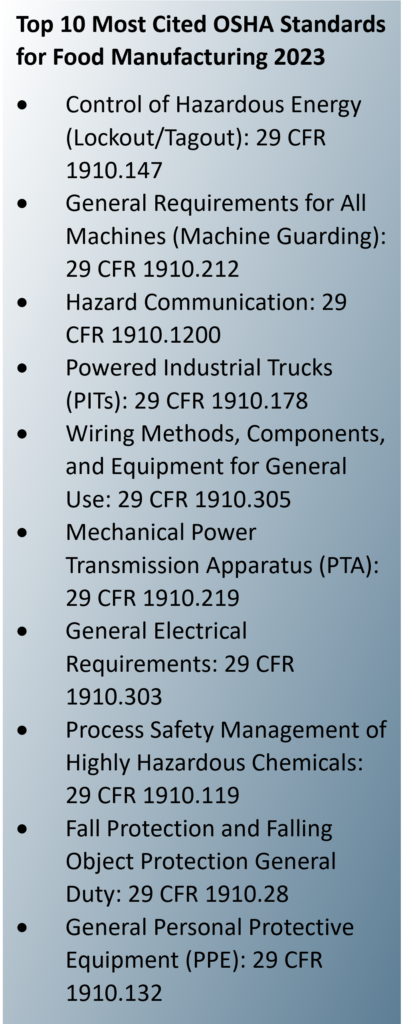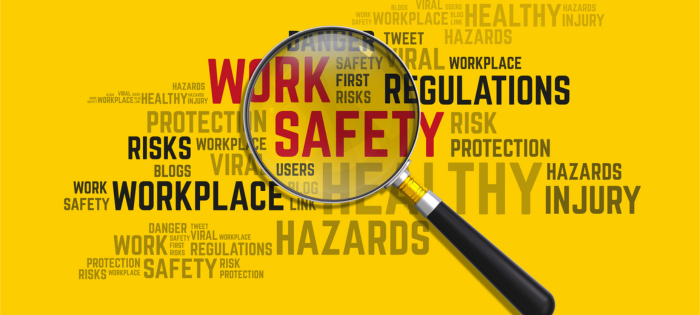
FAQs on ISO’s New Climate Change Amendments
Effective February 23, 2024, the International Organization for Standardization (ISO) is integrating climate change considerations into all management system standards through its Climate Change Amendments. These Amendments ensure climate change impacts are considered by all organizations in their management system design and implementation.
ISO’s recent action supports the London Declaration on Climate Change of September 2021, which establishes ISO’s commitment to combatting climate change through its standards and publications. The aim of the recent Amendments is to make climate change an integral part of management systems design and implementation to help guide organizational strategy and policy.
What are the changes?
The Climate Change Amendments explicitly require climate change considerations in all existing and future ISO management systems standards, as incorporated into the Harmonized Structure (Appendix 2 of the Annex SL in the ISO/IEC Directives Part 1 Consolidated ISO Supplement). More specifically, the Amendments add the following two new statements to Annex SL for organizations to consider the effects of climate change on the management system’s ability to achieve its intended results:
- Clause 4.1: The organization shall determine whether climate change is a relevant issue, as it relates to understanding the organization and its context.
- Clause 4.2: NOTE: Relevant interested parties can have requirements related to climate change, pertaining to understanding the needs and expectations of interested parties.
The broad scope of these Amendments (i.e., impacting all standards) reflects ISO’s commitment to integrating climate considerations across diverse operational areas (e.g., environment, quality, safety, food safety, security, business continuity, etc.).
What do these changes require?
The original intent and requirements of Clauses 4.1 and 4.2 remain unchanged; however, the Amendments now require organizations to consider the relevance of climate change risks and impacts on the management system(s).
Potential climate change issues will likely differ for the various standards. The Amendments ensure these various risks are considered for each standard and, if actions are required, allow the organization to effectively plan for them in the management system.
What do certified organizations need to do?
Organizations that are certified—or are planning for certification—need to make sure they consider climate change aspects and risks in the development, maintenance, and effectiveness of their management system(s).
The Amendments specifically require these organizations to evaluate and determine whether climate change is a relevant issue within their management system(s). If the answer is yes, the organization then must consider climate change in a risk evaluation within the scope of their management systems. Where relevant, organizations are further encouraged to integrate climate change into their strategic objectives and risk mitigation efforts. The Amendments do not require organizations to do anything about climate change beyond considering the impacts on the management system’s ability to achieve its intended results.
What is the timeline?
The Amendments are effective as of the date of publication. There is no transition for implementation.
Certification bodies and auditors will cover the Amendments in audit activities when assessing this section of a management system. The audit will ensure climate change is considered and, if determined to be a relevant issue, included in company objectives and risk mitigation efforts. If climate change is deemed not relevant, the audit will assess the organization’s process for making this determination.
Will new certifications be issued?
Because the changes are considered a clarification, ISO issued them in the form of an amendment. New standards will not be republished until new versions are released; therefore, the publication year of each ISO standard will not change, and no new certifications will be issued.
What are the benefits of these changes?
The Climate Change Amendments underscore the importance of understanding and addressing the impacts of climate change. By publishing the Amendments in Annex SL, ISO is leveraging the widespread adoption of all ISO management system standards across operational areas to integrate environmental stewardship into organizational practices, promote sustainability, and drive climate change action on a global scale.
For certified organizations, the Amendments are intended to enhance organizational resilience and adaptability to climate-related risks. Considering climate change in this way can significantly contribute to business sustainability and long-term success by:
- Ensuring regulatory compliance (e.g., emission limits, sustainability reporting, etc.).
- Creating positive brand reputation as a sustainable company and associated customer loyalty.
- Managing risks and opportunities associated with supply chain disruptions, energy efficiency initiatives, employee health and safety, natural disasters, etc.
- Engaging employees and attracting new talent who prioritizes sustainability.
- Providing access to markets and investors that have sustainability requirements.

Comments: No Comments
Focus on Employee Safety in the Food Industry
Safety hazards exist in every manufacturing environment. The food industry is no exception. Between October 2018 and September 2019, the Occupational Safety and Health Administration (OSHA) issued a total of 1,168 citations resulting in over $7 million in fines to the food manufacturing industry alone.
Occupational safety and health risks in food manufacturing are often heightened because of the nature of the product (i.e., food or drink) being manufactured. Even food safety measures taken to prevent contamination and ensure food safety can carry inherent occupational safety and health risks.
While food safety is paramount for any company operating in the food industry, a company cannot stay in business if they do not take the appropriate measures to keep employees healthy and safe.
Common Safety Hazards in the Food Industry

Lockout/tagout and machine guarding recurringly top OSHA’s annual list of the most frequently cited standards in food manufacturing. In fact, the most expensive OSHA fines of 2023 involved two food manufacturers and violations concerning machine guarding and lockout/tagout.
Lockout/Tagout
Employees need to be protected against the unexpected startup or release of energy. Lockout/tagout involves properly de-energizing and securing equipment so it cannot be operated unsafely when a machine needs service or repair. When employees work in a fast-paced environment, they may not take the required steps to first properly de-energize the equipment. As a result, approximately 1,000 workers die each year due to unexpected operation of equipment and/or release of stored energy. Machines and electrical equipment must be properly shut down, de-energized, and locked when servicing.
Machine Guarding
Moving machine parts have the potential to cause severe workplace injuries, such as crushed fingers or hands, amputations, burns, blindness—and most food processing machinery includes pinch points (i.e., blades, rolling parts, presses, etc.) that can put workers at increased risk. Safeguards for machine parts, functions, and processes are essential for controlling hazards and protecting workers from these otherwise preventable injuries.
Other Common Safety Hazards
- Ergonomics. Many food manufacturing jobs involve repetitive motion that can cause musculoskeletal disorders.
- Slips, trips, and falls. Sticky or wet products and frequent cleaning can both contribute to slippery work surfaces that increase the risk for slips, trips, and falls. The high volume of liquids used in food manufacturing and processing creates regular employee exposure to wet surfaces.
- Chemicals and harmful substances. Food facilities rely on various chemical sanitizers and disinfectants to prevent contamination. In addition, anhydrous ammonia, a common refrigerant used in food facilities, is very hazardous (i.e., corrosive, flammable, and explosive), even in small spaces.
- Cut hazards. Knives and other blades are common equipment in food processing plants. Dull blades cause more accidents because they are harder to work with, require more pressure, and may slip more easily. Blades should be sharpened, and employees should wear appropriate PPE.
OSHA Response: Local Emphasis Programs
Between 2016 and 2020, OSHA investigated fatalities, amputations, fractures, and crushed hands and fingers at food manufacturing facilities and identified the primary causes as failure to control hazardous energy or implement adequate machine guarding. In Wisconsin, Bureau of Labor and Statistics (BLS) data from 2011-2020 show that food manufacturing injury rates were consistently higher than the averages for all Wisconsin manufacturing companies. In 2019, OSHA found that food production workers in Ohio had a nearly 57% higher rate of amputations and 16% higher rate of fractures; in Illinois, these rates were 29% higher for amputations and 14% higher for fractures compared to private sector manufacturing.
In 2022, OSHA Region 5 established two Local Emphasis Programs (LEPs)—one for Wisconsin and one for Illinois and Ohio— to encourage employers to identify, reduce, and eliminate exposure to machine hazards during production activities and off-shift sanitation, service, and maintenance tasks (i.e., machine guarding and hazardous energy control – lockout/tagout). These LEPs run through at least 2027 and focus on reducing fatalities and injuries through outreach, education, training, and enforcement activities.
The LEP empowers OSHA to schedule and inspect food industry employers whose injury rates exceed the state average among all manufacturers. The scope of inspections conducted under the LEP focus on reviewing:
- Production operations, sanitation processes, and working conditions.
- Injury and illness records (i.e., OSHA 300 logs), particularly injuries pointing to deficiencies in machine guarding or the hazardous energy control program.
- Machine guarding hazards associated with points of operation, ingoing nip points, and moving or rotating parts of food processing equipment.
- Deficiencies in the hazardous energy control program associated with equipment service, maintenance, setup, and sanitation.
- Hazards associated with chemical burns from corrosives, such as those used for cleaning and sanitizing.
Prepare Your Facility…Protect Your Workers
If you fall under an OSHA LEP, you need to prepare your facility. Even if you don’t, you need to protect your workers.
- Prepare and maintain your OSHA 300 log with any work-related injuries and illnesses. KTL’s OSHA 300 PowerApp can make it easier to collect, search, analyze, store, and aggregate data so it is available when needed.
- Conduct a thorough hazard analysis of the facility, operations, and processes to identify potential safety hazards. The hazard analysis should answer what could potentially go wrong, what the associated consequences are, and how they can be prevented or eliminated.
- Develop, implement, and maintain the appropriate safety programs, procedures, and instructions. A safety management system that aligns with current food safety systems can provide resources to help companies identify and manage safety risks and an organizing framework for policies, procedures, and practices, including:
- Engineering controls for dangerous equipment, including machine guarding.
- Written energy control program and lockout/tagout procedures specific to each piece of equipment.
- Emergency response programs.
- Proper maintenance, cleaning, and sanitation procedures and schedules.
- Guidelines for proper use, care, and replacement of PPE.
- Train your staff. Workers need to have appropriate training, including use of PPE, hazards of extreme temperatures, material handling, hazard communication, lockout/tagout procedures, machine guarding procedures, etc. Initial safety training should be conducted when onboarding new employees, with refresher training provided annually to ensure competency. Training tracking systems allow for the centralized implementation, management, tracking, scheduling, assignment, and analysis of organizational training efforts.
- Provide proper PPE. Workers should be wearing proper footwear, gloves, safety glasses, ear plugs, aprons, etc. and be provided with anti-slip mats to ensure safety.
- Ensure safety data sheets (SDS) are current and available to help identify hazardous chemicals and protect employees from exposure. Train workers on the chemicals used in the workplace, including first aid, what to do in the event of a release, identifying characteristics, proper procedures for working around or with the chemical, and appropriate PPE.
- Use visual communication (e.g., labels, signage) to help protect workers from hot surfaces, exposed moving parts, pressurized systems, hazardous chemicals, slippery surfaces, and more.
Finally, prioritize safety. Small steps can go a long way in making sure employees leave work safely versus becoming an OSHA statistic.

Comments: No Comments
EHS: 2024 Trends on Tap
According to a December 2023 press release, the Environmental Protection Agency (EPA) moved further and faster than ever before to deliver on its mission and protect human health and the environment in 2023. These actions—in addition to other trends in business efficiency, employee safety, and sustainability—have given rise to several new (and some ongoing) challenges and opportunities in environment, health, and safety (EHS). As a new year begins, it is important that companies understand their obligations, assess potential impacts, and prioritize efforts to ensure ongoing compliance and business performance.
Here are some of the top EHS trends KTL is keeping watch on in 2024—and some guidance to help you as you set your EHS strategy for the new year.
New OSHA Reporting Requirements
The Occupational Safety and Health Administration (OSHA) is focused on increasing transparency regarding workplace injuries with its new reporting requirements, which are effective as of January 1, 2024. The Administration is requiring organizations with more than 100 employees in certain high-risk industries to electronically submit information from OSHA Forms 300 and 301 to OSHA annually. In addition, certain high-hazard industries are now required to submit case-specific information. The data is intended to allow employers, employees, customers, the public, and other stakeholders to make more informed decisions about workplace health and safety. The deadline to submit information via the Injury Tracking Application is March 2, 2024.
Guidance: Maintaining robust occupational health and safety and incident records becomes even more important with these enhanced reporting requirements. Information technology (IT) tools, such as KTL’s OSHA 300 PowerApp with its comprehensive intake form tailored to OSHA 300 and OSHA 300A requirements, make it easier to collect, search, and analyze data—and maintain OSHA compliance. Using a digital format helps ensure no crucial data points are missed and makes it easy to filter, search, and analyze records and data to offer deeper insights into safety performance.
Climate Change and Environmental, Social, and Governance (ESG) Standards
In March 2022, the U.S. Securities and Exchange Commission (SEC) issued a proposed ESG Disclosures Rule that would require companies to 1) disclose how they are dealing with oversight and governance of climate-related risks; 2) identify any material climate-related risks and articulate their impacts on financial performance; and 3) provide comprehensive reporting of Scope 1, 2, and 3 greenhouse gas (GHG) emissions.
Leading the way, California passed its Climate Corporate Data Accountability Act (SB 253) and Climate-Related Financial Risk Act (SB 261) in 2023 to address the physical, human, and financial risks associated with climate change by requiring companies publicly disclose GHG emissions and climate change threats. Thousands of organizations that do business in California will now have to provide carbon emissions data by 2026—and companies across the country need to be prepared to follow suit.
Guidance: If it isn’t happening already, facilities need to start gathering emissions data, develop and implement a system to track GHG emissions, and create an action plan for climate disclosure. Accurate carbon accounting and energy management will allow companies to gain a deeper understanding of their emissions profiles and implement changes to improve energy efficiency and sustainability. If managed appropriately, these new disclosure requirements can provide a significant opportunity for companies to demonstrate a commitment to corporate social responsibility and improve brand reputation.
EPA Regulatory Enforcement
According to EPA, enforcement has been revitalized. We saw this trend pick up in 2023 with significant investments being made to enforce compliance with the nation’s environmental laws, including $213 million for civil enforcement efforts, $148 million for compliance monitoring efforts, and $69 million for criminal enforcement efforts. The past year has brought increases in onsite inspections, new criminal investigations, civil settlements, and cleanup enforcement. In 2024, EPA intends to continue its enforcement path, holding environmental violators and responsible parties accountable.
Guidance: Facility audits and assessments offer a systematic, objective tool to assess compliance across the workplace and to identify any opportunities for improvement before they become findings in an EPA inspection. These audits can also present an opportunity for organizational learning and development, particularly related to non-conformances. Conduct a gap assessment to evaluate whether processes and systems are functioning as intended, and then implement corrective and preventive actions to ensure compliance, particularly at the time of inspection. Look at the big picture and consider changes in production and business operations that may also change compliance requirements.
Per- and Polyfluoroalkyl Substances (PFAS)
EPA continues to make significant contributions in research and regulations, according to the PFAS Strategic Roadmap, to confront the human health and environmental risks of PFAS. In October 2023, the Agency finalized two new rules to improve reporting on PFAS. This January, EPA finalized a rule to prevent inactive PFAS from reentering commerce and added seven additional PFAS to Toxics Release Inventory (TRI) reporting. The Food and Drug Administration (FDA) is further working to understand and limit PFAS in food and food packaging.
Guidance: It is important for facilities to have a good understanding of PFAS and PFAS-containing chemicals used onsite, as reporting requirements now apply regardless of the quantity used. Implementing a chemical inventory management system that documents and manages PFAS data can make reporting more efficient and help ensure the facility meets these new requirements. Proper usage strategies, a comprehensive environmental management system (EMS), and a forward-thinking Emergency Response Plan will also remain vital tools for companies potentially dealing with PFAS to effectively manage the associated risks.
Environmental Justice (EJ)
The focus on EJ remains a top priority for the Biden Administration. In November 2023, EPA announced the largest single investment in EJ history, funded by President Biden’s Inflation Reduction Act. The Community Change Grants build on Biden’s Justice40 Initiative and will provide approximately $2 billion in funding for community-driven projects that deploy clean energy, strengthen climate resilience, and build capacity to manage environmental and climate justice challenges. EPA also launched the EJ Thriving Communities Grantmaking Program to expand its technical assistance and project grants for communities, as well as the EJScreen screening and mapping tool, which provides EPA with a consistent approach for combining environmental and demographic socioeconomic indicators.
Guidance: Take the time to understand the communities where you operate—be informed, be prepared, and be proactive. Establish organization priorities and goals and commit the appropriate resources to address EJ concerns. With EPA focused on more regulations, more enforcement, and improved climate change and EJ, environmental management needs to play an integral role in company strategy.
Chemical Safety
EPA is working to strengthen chemical safety with the long-awaited implementation of the 2016 amendments to the Toxic Substances Control Act (TSCA). In addition, the Agency has advanced rules to better protect communities from harmful chemicals like TCE and methylene chloride. These rulemakings align with Goal 7 of the FY 2022-2026 EPA Strategic Plan to ensure the safety of chemicals for people and the environment.
Guidance: Facilities need to have a good understanding of chemicals used onsite so they can take action now to phase out any regulated chemicals (e.g., TCE), as the phaseout period will be quick. Take an inventory of onsite chemicals to determine what chemicals the facility manufactures, distributes, and/or uses. For many chemicals, safer alternatives may be available to eliminate the use of banned chemicals. Be aware of compliance deadlines as you make the transition.
Other Issues to Watch
The following OSHA issues also ones to watch in 2024:
- OSHA Hazard Communications Standard (HCS): In 2021, OSHA proposed to modify the HCS to maintain conformity with the United Nations Globally Harmonized System (GHS) revision 7, align certain provisions with Canadian and other U.S. agencies, and address issues with the 2012 HCS. The proposed updates are intended to increase worker protections and reduce the incidence of chemical-related occupational illnesses and injuries by improving the information on labels and safety data sheets (SDS) for hazardous chemicals. The Agency expects to release finalized changes to the HCS in early 2024.
- OSHA Emergency Response Standard: OSHA has released an unofficial version of its new Emergency Response Proposed Rule and anticipates publication in the Federal Register in January 2024. The proposed rule would replace OSHA’s existing Fire Brigades Standard (29 CFR 1910.156), which covers only a subset of emergency responders. The proposed Rule provides basic workplace protection for workers who respond to emergencies as part of their regularly assigned duties (e.g., fire departments, emergency medical service, and technical search and rescue).
- OSHA National Emphasis Program (NEP) on Warehousing and Distribution Center Operations: Effective July 13, 2023, OSHA announced an NEP for inspections at warehousing and distribution centers, mail/postal processing and distribution centers, and other high-risk retail establishments. The comprehensive safety inspections will focus on workplace hazards common to those industries, including powered industrial vehicle operations, material handling/storage, walking-working surfaces, means of egress, and fire protection.
Set Your Goals for 2024
There is a common need across industry to manage emerging EHS risks with solutions that also provide transparency, security, and sustainability. Heightened EPA enforcement, new OSHA reporting requirements, and pending SEC requirements for ESG are necessitating solutions to help manage business and EHS requirements—and that will continue in 2024.
KTL suggests completing the following early in 2024:
- Get senior leadership commitment. Even with the best EHS personnel, the organization and its EHS system will only be as good as the top leadership and what is important to them.
- Conduct a comprehensive gap assessment to ensure you are meeting the requirements of all applicable EHS regulations, particularly given new environmental, health and safety, and ESG requirements. Think critically about what you have and how overlapping requirements may apply (e.g., your chemical inventory may uncover requirements for air permitting, waste management, Tier II report, etc.). This assessment should be the starting place for understanding your regulatory obligations and current compliance status.
- Seek third-party oversight. Having external experts periodically look inside your company provides an objective view of operations, helps you to prepare for audits, and allows you to implement corrective/preventive actions that ensure compliance. An outside expert can often provide the “big picture” view of what you have vs. what you need; how your plans, programs, and requirements intersect; and how you can best comply.
- Create an integrated management system (e.g., ISO 9001/14001/45001) by finding commonalities between the standards and leveraging pieces of each to develop a reliable system that works for your organization.
- Leverage IT solutions—whether to inventory chemicals and GHG emissions, track OSHA performance, or manage compliance requirements. Technology advancements can help create significant business efficiencies.

Comments: No Comments
Safety Focus: One Size Does Not Fit All
Women make up nearly 30% of the manufacturing sector and 78% of all healthcare jobs. The number of women working in construction has steadily increased between 2012 and 2020. And yet, a 2019 report from the American Society of Safety Professionals (ASSP) found acquiring properly fitting personal protective equipment (PPE) is still a challenge for this growing segment of over eight million female workers.
Properly fitting PPE is essential in every industry to help ensure workers can complete their tasks safely. And when it comes to PPE, a one-size-fits-all approach does not suffice.
Regulatory Framework
According to the Occupational Safety and Health Administration’s (OSHA) PPE General Requirements Standard (29 CFR 1910.132), all PPE must be designed and constructed for the work to be performed, and employers are required to select PPE that properly fits each affected employee. OSHA guidance specifically states that PPE used by women should be based upon female anthropometric data. (See more below on anthropometry.) OSHA is also in the process of developing a proposed rule that may create more robust standards for employers to ensure all workers receive adequately fitted PPE.
In September 2023, ASSP issued a Technical Report: Guidance of Personal Protective Equipment for Women (registered with ANSI: ASSP TR-Z590.6-2023) to provide guidance for the selection, fit, and use of PPE for women. This ANSI-registered report aims to help employers develop tailored PPE programs and/or adjust their existing PPE programs to account for women workers. The guidance addresses fit issues, selection, assessment, and use of such PPE and outlines anthropometric considerations and sizing for:
- Head
- Face/eyes/mouth
- Body/torso
- Hand
- Foot
Focusing on Anthropometry
According to the National Institute for Occupational Safety and Health (NIOSH), the use of anthropometric data is important to ensure adequate PPE fit. Anthropometry is the science that defines a person’s size, body shape, and functional capabilities. There are intrinsic differences in the shape and size of women’s bodies vs. men’s bodies that require PPE to be tailored differently to fit appropriately—not just be sized down. For example, women tend to have smaller wrists, hands, and feet; shorter arms and legs; and wider hips than men.
PPE has historically been designed and manufactured for men based on outdated anthropometric data collected from the military in the 1950s and 1970s, resulting in poor-fitting PPE for women and other individuals who do not fall into the “average” range. A survey conducted by CSA Group in Canada found that of almost 3,000 women who regularly use PPE on the job, over 80% experience some PPE-related challenges (e.g., improper fit, inadequate selection, or discomfort).
Cause for Concern
If PPE is not correctly fitted to the body, it can cause discomfort and increase the risk of workplace accidents and injuries. According to 2020 U.S. Bureau of Labor Statistics reports, women experience more fatal injury events than men in the category of exposure to harmful substances or environments. This may be attributed to PPE not being adequate to appropriately reduce exposure to harmful substances. The CSA Group survey further found that injuries and incidents related to PPE were reported among 40% of the women.
Using standard PPE in a smaller size that does not consider anthropometry is not a solution. Ill-fitting PPE may prevent the wearer from moving comfortably, hamper productivity, and cause other significant safety hazards. For example:
- Gloves and clothing: If clothing and gloves are too loose, they are more likely to get caught in machinery and equipment, potentially causing amputations or even fatalities. Improperly fitting gloves can also cause the wearer to drop or mishandle items.
- Footwear: Ill-fitting footwear can cause trouble walking/tripping, create blisters, or provide inadequate toe protection. It may even eventually lead to foot deformities over time.
- Eye protection: Bulky or ill-fitting eye protection may leave gaps in protection and could allow debris to enter the eyes.
- Fall protection: Poor fitting PPE used when working from height (e.g., personal fall arrest systems) may not distribute weight evenly and could render such systems ineffective. Improperly sized safety vests and fall harnesses can also increase the severity of fall injuries.
- Respiratory protection: If respirators don’t fit correctly, they could prevent access to clean air and expose workers to respiratory irritants. Bloodborne pathogen exposures could also occur.
When PPE does not fit right, employees may feel inclined to alter their PPE. This can compromise the integrity of the PPE, prevent it from performing as intended, directly impact the employee’s ability to work, and jeopardize the level of protection. Even worse, women just may not opt to wear the ill-fitting PPE, significantly increasing overall accident exposure.
Best Practices
It is crucial that employers provide adequate PPE to all workers to prevent potential safety risks, especially those stemming from wearing ill-fitting PPE. Employers cannot afford to wait for employees to complain about ill-fitting PPE or, worse yet, for an accident to occur. The focus should be on adopting the following best practices to ensure all employees are well protected and productive:
- Review policies and procedures. Employers should regularly assess PPE policies and procedures and revise them, as needed, to comply with current and pending OSHA requirements and industry guidelines.
- Conduct fit testing. Comfort is a major factor with PPE. To encourage usage, PPE must fit comfortably. Employers can ensure this by conducting regular fit testing for employees to ensure the PPE fits and functions as intended.
- Look for better alternatives. Smaller sizes alone do not cut it for PPE. Employers should continually look for alternatives for better PPE that will meet the anthropometric needs of all workers, particularly as new options continually come on the market that are designed specifically for women.
- Promote inclusivity. Recognize that workers may require specific PPE needs based on sex, height, weight, physical abilities, and cultural differences. Addressing the safety needs of all workers goes a long way in creating a more inclusive work environment the values the safety of all employees. The ASSP Guidance provides an excellent resource to help companies consider the anthropometric needs of women when assessing fit. Other PPE options to consider may include maternity PPE, PPE for workers with limb differences, and PPE for workers with cultural or religious needs.
- Train, train, train. Employees need to understand how PPE should fit. They also need to be empowered to speak up if PPE does not fit appropriately to ensure their safety.

Comments: No Comments
Root Cause Analysis
Safe + Sound Week
At the most basic level, a root cause is the fundamental reason—or the highest-level cause—for the occurrence of a problem, incident, or event. Getting to the root cause of any problem is important not just for resolving the issue at hand, but for identifying underlying issues to ensure that similar problems do not recur in the future. Importantly, finding the root cause should not focus on placing blame on an individual but rather on finding the systemic cause of an incident. This starts with a process called the root cause analysis (RCA).
What Is the Root Cause Analysis (RCA)?
RCA is a method of problem-solving used to identify the underlying (i.e., root) cause(s) of a problem or incident. It is a systematic process based on the basic idea that effective management requires more than merely putting out fires and treating symptoms. RCA seeks to identify and address the true, underlying concerns that contribute to a problem or event.
Why is this important? If you just treat the symptoms of the problem, that alleviates them for the short term, but it does nothing to prevent the problem from coming back again. Lasting solutions address the underlying factors—the root cause(s)— that create the problem in the first place. Targeting corrective measures at the identified root causes, subsequently, is the best way to alleviate risk and ensure that similar problems do not occur in the future.
Best Practice
The Occupational Safety and Health Administration (OSHA) encourages organizations to conduct RCA following any incident or near miss at a facility. RCA can be broken down into a simple six-step process, as outlined below.
Step 1: Identify and Clearly Describe the Problem
The first step is to understand and document the problem/issue/incident that occurred. This might involve interviewing key staff, reviewing security footage, investigating the site, etc. to get an accurate account of the issue. Safety-related incidents might require an immediate fix or prompt action before carrying out the complete RCA. This is always the priority.
Some problems are easier to define than others based on what happened and the extent of the issue. When defining and describing the problem, it is important to be as descriptive as possible, as this will aid in future steps to identify the root cause(s).
Step 2: Identify Possible Causes…Why?
There are several methods for identifying possible root causes, including the following:
- 5 Why Method simply involves asking the question “Why” enough times (i.e., five times) to get past all the symptoms of a problem and down to the underlying root cause of the issue.
- Event Analysis builds a detailed timeline around the target event and analyzes it to see where things went wrong. This method is best for one-time incidents versus a pattern of behavior.
- Change Analysis helps determine the root cause of a general shift in behavior. It looks at all changes in the organization that preceded the change in safety behavior/metrics; defines the relationship between possible causes and effects; and categorizes each organizational change as either unrelated, correlated, contributing, or root cause.
- Fishbone or Ishikawa Diagram is a visual cause-and-effect diagram that encourages you to think of every possible cause by examining a wide variety of aspects of the incident.
Step 3: Identify Root Cause(s)
Where does your questioning lead you? Is there one root cause or a series of root causes that emerge? The root cause(s) of most incidents ultimately fall under one of the following:
- Poor management/supervision
- Lack of company culture
- Insufficient work environment
- Improper training
Again, identifying the root cause should not focus on placing blame on an individual but rather on finding the systemic cause of an incident.
Step 4: Corrective and/or Preventive Action Taken
Based on the identified root causes, it then becomes possible for the facility to determine what corrective and/or prevention actions (CAPAs) can be taken to fix the problem and, just as important, prevent it from recurring in the future.
Step 5: Analyze Effectiveness
The effectiveness of whatever action is taken in step 4 needs to be evaluated to determine whether it will resolve the root cause. If not, another CAPA should be explored, implemented, and analyzed to assess its impact on the issue/problem. If it is a root cause, it should help to resolve the issue and you should move on to step 6 below.
Step 6: Update Procedures, as necessary
As CAPAs are implemented, once they prove effective, related policies and procedures must be updated to reflect any changes made. This step ensures the outcomes of the RCA will be integrated into operations and used to prevent similar incidents from happening in the future.
Benefits of RCA
Following these steps will help ensure a thorough investigation that identifies root cause(s) versus just symptoms is conducted. It further ensures that any changes related to the root cause are integrated into the organization to prevent similar events from happening again. In the end, the RCA can help:
- Reduce the risk of injury and/or death to workers and community members.
- Avoid unnecessary costs resulting from business interruption; emergency response and cleanup; increased regulation, audits, and inspections; and OSHA fines.
- Improve public trust by maintaining an incident-free record.
- More effectively control hazards, improve process reliability, increase revenues, decrease production costs, lower maintenance costs, and lower insurance premiums.

Comments: No Comments
Safety Management Systems
Safe + Sound Week
Most companies have health and safety policies and procedures in place to help ensure the safety and well-being of their employees. At a minimum, it is important to verify implementation of required safety programs at all locations. As a best practice, implementing a safety management system (SMS) provides companies with the opportunity to better manage, control, and improve health and safety performance.
SMS Basics
An SMS is the organizing framework that enables companies to achieve and sustain their operational and safety objectives through a process of continuous improvement. The SMS is designed to identify and manage safety risks through an organized set of policies, procedures, practices, and resources that guide the enterprise and its activities to maximize business value. The SMS addresses:
- What is done and why.
- How it is done and by whom.
- How well it is being done.
- How it is maintained and reviewed.
- How it can be improved.
Each company’s SMS reflects its unique safety culture, vision, and values. To be effective and valuable, the SMS must be tailored and focused on how it can enhance the business and safety performance of the organization. It must also be:
- Useful to people in the operations.
- Intuitive—organized the way operations people think.
- Flexible—making use of methods and tools as they are developed and documented.
- Valuable from the outset—addressing the most critical risks and processes.
- A means to better align safety with operational quality, environmental concerns, and overall business operations.
SMS Development
An effective SMS requires senior management commitment and guidance, coupled with employee engagement. Importantly, the SMS involves a continual cycle of planning, implementing, reviewing, and improving the way in which safety obligations and objectives are met. In its simplest form, this involves implementing the Plan, Do, Check, Act/Adjust (P-D-C-A) cycle for continuous improvement.
There are some basic steps to creating a SMS:
- Invest the time to understand the current scope of operations, functional departments, compliance requirements, governance structure, etc. across the entire organization, not just siloed departments.
- Conduct a gap assessment to evaluate the current (“as-is”) condition of any formal or informal SMS against the desired (“to-be”) condition (e.g., ISO 45001, ANSI Z10).
- Create a development and implementation plan outlining tasks and resources required to close any identified gaps and achieve those objectives.
- Determine key components of the SMS required to achieve business objectives.
- Identify common elements to be standardized and incorporated into the SMS (e.g., policies, procedures, processes, metrics, training).
- Determine what information technology can support and streamline the SMS.
- Provide relevant training to all interested parties to truly operationalize the SMS across the organization.
SMS Standards
ISO 45001 and ANSI Z10 both offer widely recognized frameworks for creating an effective SMS—one that helps companies to:
- Identify and control health and safety risks.
- Reduce the potential for accidents.
- Aid in legal compliance.
- Achieve greater consistency and reliability.
- Improve overall performance.
The ISO 45001 and ANSI Z10 standards both contain elements that are designed to be compatible with the structures of ISO 9001 and ISO 14001, allowing organizations to more easily align their SMS with other existing management systems (e.g., environmental, quality, food safety, security). An aligned SMS helps companies to achieve improved and more reliable safety performance, while adding measurable business value.
Certification
Companies can become certified to each of the standards discussed above. Certification has a number of benefits, including the following:
- Meet customer or supply chain requirements.
- Use outside drivers to maintain management system process discipline (e.g., periodic risk assessment, document management, compliance evaluation, internal audits, management review).
- Take advantage of third-party assessment and recommendations.
- Improve standing with regulatory agencies (e.g., OSHA, state programs).
- Demonstrate the application of industry best practice in the event of incidents/accidents requiring defense of practices.
However, if there is no market or other business driver, certification can lead to unnecessary additional cost and effort regarding management system development. Certification in itself does not mean improved performance—management system structure, operation, and management commitment determine that.
Bringing Value to the Organization
The connection between the SMS and compliance is vital in avoiding recurring compliance issues and in reducing variation in safety performance. In fact, reliable and effective regulatory compliance is commonly an outcome of consistent and reliable implementation of a management system. Beyond that, there are a number of business reasons for implementing an SMS:
- Establishes a common documented framework to achieve more consistent implementation of compliance policies and processes.
- Provides clear methods and processes to identify, prioritize risks, and communicate risks to employees and management—then allocate the resources to mitigate them.
- Allows for development of meaningful objectives to drive ongoing improvements in health and safety performance.
- Empowers individual facilities and departments to take responsibility for processes and compliance performance without waiting to be told “what” and “how”.
- Enables better collaboration and communication across a distributed company with many locations.
- Provides tracking information and reporting on common safety activities and performance metrics across the company.
- Builds company know-how, captures/retains institutional knowledge, and creates consistent processes and procedures that support personnel changes (e.g., transfers, promotions, retirements, new employees) without causing disruption or gaps.
- Allows for more consistent oversight and governance, yielding higher predictability and reliability.

Comments: No Comments
Heat Stress
Safe + Sound Week
According to the Occupational Safety and Health Administration (OSHA), thousands of workers become sick from occupational heat exposure each year—and some of these cases turn fatal. Hazardous heat exposure can occur indoors or outdoors, during any season, and to anyone. This is why it is important that all employers take steps to reduce heat exposure and protect employee health and safety.
Heat-Related Illnesses and Injuries
Exposure to extreme heat (i.e., heat stress) can result in occupational illnesses and injuries, including heat stroke, heat exhaustion, heat cramps, or heat rashes. Heat can also increase the risk of ancillary injuries due to sweaty palms, fogged-up safety glasses, dizziness, and even deterioration of fine motor performance. Burns may also occur from accidental contact with hot surfaces or steam.
Heat stroke is the most serious heat-related disorder and should be considered a medical emergency. It occurs when the body becomes unable to control its own temperature. Workers suffering from heat stroke may experience dizziness or unconsciousness, disorientation, slurred speech, chills, and headache. If you or another employee are suffering from heat stroke, exhaustion, or fainting, alert a supervisor immediately and call 911.
Risk Factors
Workers who are exposed to extreme heat or work in hot environments may be at greater risk of heat stress. This includes both outdoor workers and workers in hot environments (e.g., firefighters, cooks/chefs, bakery workers, farmers, construction workers, miners, boiler room workers, factory workers, and others). Occupational risk factors for heat illness include heavy physical activity, lack of acclimatization, and wearing clothing that holds in body heat. In addition, individuals who may be particularly susceptible to heat-related illness include those who are 65 years of age or older, are overweight, have heart disease or high blood pressure, or take medications that may be affected by extreme heat.
Planning and Prevention
Heat-related illness is often preventable, especially with management commitment to providing the most effective controls. An effective heat-related illness prevention program should be developed and incorporated into every company’s broader safety and health program. Important elements to consider when creating the heat plan include the following:
- Who will provide oversight and heat monitoring throughout the workday as conditions change?
- How will new and/or temporary workers gradually develop heat tolerance (i.e., acclimatization)?
- How will the employer ensure first aid is adequate?
- What is the protocol for summoning medical assistance?
- What engineering controls and administrative work practices will be used to reduce heat stress?
- How will heat stress be measured?
- How will the company respond when the National Weather Service issues a heat advisory or heat warning?
- What training will be provided to workers and supervisors?
Controls
Workplace heat stress can be reduced using several methods. Engineering controls involve changing the design of the workplace in ways that reduce exposure to heat. This might include increasing air velocity; using reflective or heat-absorbing barriers; or reducing steam leaks, wet floors, and humidity. Administrative (workplace) practices involve changes to tasks, schedules, and behaviors to reduce heat stress. These may include:
- Limiting time in the heat and/or increasing recovery time spent in a cool area.
- Increasing the number of workers per task.
- Requiring workers to conduct self-monitoring.
- Creating work groups (i.e., workers, a qualified healthcare provider, and a safety manager) to make decisions on self-monitoring options and standard operating procedures.
- Providing adequate amounts of cool, potable water near the work area and encouraging workers to drink often.
- Using a heat alert program whenever the weather service forecasts a heat wave.
Acclimatization— the process of building heat tolerance—is a particularly important control. 50% to 70% of outdoor fatalities occur in the first few days of working in warm or hot environments because the body needs to build a tolerance to the heat gradually over time. Employers should ensure that new workers, temporary workers, and workers who have been on vacation are acclimatized before they work in a hot environment by gradually increasing workers’ time in hot conditions over 7 to 14 days.
Finally, employers should provide training to workers so they understand what heat stress is, how it affects their health and safety, and how it can be prevented. Training should include:
- Signs and symptoms of heat-related illnesses and administration of first aid.
- Causes of heat-related illnesses and steps to reduce the risk.
- Proper care and use of heat-protective clothing and equipment and the added heat load caused by exertion, clothing, and personal protective equipment.
- Effects of other factors (drugs, alcohol, obesity, etc.) on tolerance to occupational heat stress.
- Acclimatization process.
- Reporting symptoms or signs of heat-related illness.
- Procedures for responding to symptoms of possible heat-related illness and for contacting emergency medical services.
Personal Accountability
To avoid becoming a victim of heat stress of any type, wear light-colored, breathable clothing, such as cotton. Gradually build up to more strenuous work. Schedule more breaks on days with extreme heat and humidity. Drink water! Lots of water! Avoid soda, energy drinks, alcohol, or any other drinks that have high amounts of caffeine and sugar in them. And ALWAYS monitor yourself and others who are at risk for heat stress in hot and /or humid conditions.
More resources:

Comments: No Comments
Lone Worker Safety
Safe + Sound Week
In the post-COVID world, working remotely and alone has become much more common. In many industries, particular attention needs to be paid to these lone workers to ensure appropriate practices and procedures are in place to keep them safe.
What Is a Lone Worker?
Lone workers are people who perform their jobs alone—without someone else present and without any supervision. Lone workers cannot be heard or seen by another individual while working. They may work in more remote locations with limited emergency response or perform jobs during nonstandard work hours. Lone workers may also work in the same building or area as others but out of viewing or hearing distance.
Workplace Safety Hazards
A workplace safety hazard is anything that could potentially cause harm or damage to people, property, or equipment. The most common safety hazard for all workers, including lone workers, is slips, trips and falls. Another common safety hazard that lone workers face is from machinery and equipment, which can injure or trap the worker.
To avoid workplace safety hazards, there are certain conditions where lone work is not recommended and/or prohibited, including the following conditions:
- From height
- With electricity or in confined spaces
- During severe weather conditions
- Around avalanche risks
- Near chemical exposure that could incapacitate a worker
- When respirators or air monitoring is required
- Using hazardous equipment (e.g., chainsaws, firearms)
- Where the potential for violence is present
Planning and Preparation
The Occupational Safety and Health Administration (OSHA) does not have a standard for employees working alone; however, there are several standards that apply to specific lone-work situations (e.g., emergency response, interior structural firefighting). OSHA further recommends that employers develop emergency procedures and provide “a wireless electronic notification device and/or cellphone to those employees.”
As best practice, any company with lone workers should develop and implement a lone worker safety program with specific practices and procedures to minimize the risk of injury. This includes the following:
- Identify, assess, and mitigate work hazards. It is important to identify safety hazards in any work environment but particularly for lone workers who must navigate hazardous situations alone. Each hazard’s level of risk must be assessed. Once this assessment is complete, strategies can then be implemented to remove existing dangers to the extent possible, prioritizing the highest risk hazards. Hazard mitigation should consider physical modifications, safety education and training, and communication to help ensure workplace injuries and incidents occur less frequently.
- Create a lone worker policy. This policy should establish the organization’s rules and practices for working alone. Generally, a lone worker safety policy should include:
- Contact information and location of all lone workers
- General safety guidance
- Roles and responsibilities
- Safety procedures and processes, including predetermined safety check-ins and stop-work guidance
- Methods of communication and available backups (e.g., cell phone, GPS devices, and mobile apps)
- Emergency procedures and contacts
- Lone worker training and continuous education
- Monitor lone workers. Lone workers must be monitored, whether through regular manual check-ins or automated monitoring systems. Both allow the employer to confirm the worker’s safety and well-being. If a worker misses a check-in, an automated system can immediately request help and employ tools such as GPS location tracking to provide necessary assistance.
Don’t forget about your lone workers. They play an important role and special provisions need to be taken to ensure they are monitored and protected.

Comments: No Comments
Speaking Safety
Safe + Sound Week
When it comes to the characteristics of an excellent safety culture, communication is at the top. It is vital that all levels of management (senior, middle, supervisory) communicate their commitment to safety clearly to workers. It is equally important that workers feel empowered to discuss their safety concerns.
Having a safety culture where workers do not feel like they can speak up at work when it comes to their safety can present significant threats to workers and the overall well-being of the company. A high percentage of workplace injuries occur when a worker witnesses unsafe behaviors or conditions but chooses not to say anything. Those injuries are 100% preventable. However, it requires creating a culture of transparency and openness that encourages staff to look out for each other and speak up when concerns arise—and a culture where team members are not afraid of voicing their safety concerns, no matter how big or how small they may be.
How to Effectively Speak Safety
Workers may be reluctant to accept safety advice for many reasons:
- They don’t like being told what to do.
- They don’t believe they are in danger.
- They perceive safety conversations/assistance as punishment or aggression.
The challenge is to have productive conversations about safety despite these barriers, considering not only what you say but how you say it. For many, this does not necessarily come naturally, which is why effective safety conversations should be taught and practiced.
These tips can help make speaking about safety easier:
- Take a persuasive approach versus a punitive one. Safety conversations shouldn’t be about catching someone doing something wrong. The goal should be safety, not punishment.
- Demonstrate care and concern. It is much more meaningful to show concern for the personal safety of individuals than to reinforce compliance with rules.
- Speak the worker’s language. Think about who you are speaking to and what is important to them. Delivering a safety message to senior management will differ than communicating with field staff.
- Focus on specifics. Avoid expressing judgment or disapproval. When addressing a specific safety behavior or situation, limit comments to that rather than making general statements.
- Listen. Good communication goes both ways. A respectful conversation will involve both expressing yourself and listening to the other person.
- Don’t be intimidated. The fear of a negative reaction is common, particularly when a less experienced person must deliver advice to someone more senior. Remember, no one is immune to safety concerns.
- Lead by example and encourage others to do the same. It is one thing to say that safety is a priority; it is another thing to show that it is.
Sometimes, relying on those around us to help notice and communicate when something isn’t right can provide the best form of safety protection—because no one is immune to safety concerns, safety errors, distraction, or complacency. Improving an organization’s overall safety culture and the atmosphere around safety conversations can make it easier to both give and receive advice in a constructive way and, best-case scenario, save lives.

Comments: No Comments
Focus on H&S: National Safety Month & Safe + Sound Week
According to the Occupational Safety and Health Administration (OSHA), successful safety and health programs can proactively identify and manage workplace hazards before they cause injury or illness, improving sustainability and the bottom line. An organization’s safety culture is ultimately reflected in the way that safety is managed in the workplace, and having a strong safety and health program can help create:
- Fewer accidents, losses, and disruptions by preventing workplace injuries and illnesses.
- Engaged employees and improved morale.
- Increased productivity and enhanced overall business operations.
- Lower workers’ compensation and insurance claims.
- Improved compliance with OSHA regulations.
- Improved reputation to attract new customers and employees and retain existing ones.
- Better brand and shareholder value that tie to social responsibility.
H&S Observations
The National Safety Council (NSC) cites that more than 4,400 preventable workplace deaths and 4.26 million injuries occurred in 2021. Raising public awareness about workplace safety can significantly decrease the number of preventable injuries and deaths. Every June, NSC observes National Safety Month to do just this by encouraging employers and individuals alike to be safety role models.
Much like NSC, OSHA created Safe + Sound Week (August 7-13, 2023) as a year-round campaign to encourage America’s workplaces to commit to workplace safety and health by starting a health and safety program, energizing an existing one, or recognizing health and safety successes.
Taking the Pledge
This year, both NSC and OSHA are encouraging companies to reaffirm their commitments to safety and health by taking a pledge:
Safe + Sound pledge: I pledge to make safety a core workplace value. Everyone has the right to a safe and healthy workplace, and I will work to ensure everyone goes home safe and sound every day. My workplace will be taking action to improve our safety and health program during Safe + Sound Week 2023.
NSC SafeAtWork pledge: I commit to:
- Actively help my employer improve our safety programs.
- Report hazards promptly and suggest solutions.
- Be a good safety role model for my friends and family, even off the job.
Core Elements of Workplace Health and Safety
OSHA reiterates that the core elements of a workplace health and safety program include the following elements:
- Management leadership. Management must provide the leadership, vision, and resources needed to implement an effective safety and health program.
- Worker participation. Engaging workers at all levels in establishing, implementing, evaluating, and improving safety and health in the workplace creates buy-in.
- Systematic approach to finding and fixing hazards. Finding and fixing hazards in the workplace is an ongoing process to better identify and control sources of potential injuries or illnesses.
KTL’s Series on Investing in Safety
Throughout OSHA’s Safe + Sound Week (August 7-13, 2023), KTL will be featuring a series of articles and posts on our blog and social media (i.e., Facebook, LinkedIn, Twitter) reinforcing these concepts from OSHA and NSC and discussing why businesses should invest in safety. Topics will include the following:
Watch for these articles! For more information on what your organization can do to participate and promote a strong safety culture, visit the websites for OSHA Safe + Sound Week and NSC National Safety Month.
